- Home
- James Patterson
Run for Your Life
Run for Your Life Read online
Copyright © 2009 by James Patterson
All rights reserved. Except as permitted under the U.S. Copyright Act of 1976, no part of this publication may be reproduced, distributed, or transmitted in any form or by any means, or stored in a database or retrieval system, without the prior written permission of the publisher.
Little, Brown and Company
Hachette Book Group
237 Park Avenue, New York, NY 10017
Visit our Web site at www.HachetteBookGroup.com
First eBook Edition: February 2009
Little, Brown and Company is a division of Hachette Book Group, Inc. The Little, Brown name and logo are trademarks of Hachette Book Group, Inc.
The characters and events in this book are fictitious. Any similarity to real persons, living or dead, is coincidental and not intended by the author.
ISBN: 978-0-316-04073-0
Contents
Prologue: FIGHT THE POWER
One
Two
Three
Part One: THE TEACHER
Chapter 1
Chapter 2
Chapter 3
Chapter 4
Chapter 5
Chapter 6
Chapter 7
Chapter 8
Chapter 9
Chapter 10
Chapter 11
Chapter 12
Chapter 13
Chapter 14
Chapter 15
Chapter 16
Chapter 17
Part Two: PUKE BY THE GALLON
Chapter 18
Chapter 19
Chapter 20
Chapter 21
Chapter 22
Chapter 23
Chapter 24
Chapter 25
Chapter 26
Chapter 27
Chapter 28
Chapter 29
Chapter 30
Chapter 31
Chapter 32
Chapter 33
Chapter 34
Chapter 35
Chapter 36
Chapter 37
Chapter 38
Chapter 39
Chapter 40
Chapter 41
Chapter 42
Chapter 43
Chapter 44
Part Three: LIFE LESSONS
Chapter 45
Chapter 46
Chapter 47
Chapter 48
Chapter 49
Chapter 50
Chapter 51
Chapter 52
Chapter 53
Chapter 54
Chapter 55
Chapter 56
Chapter 57
Chapter 58
Chapter 59
Chapter 60
Chapter 61
Chapter 62
Chapter 63
Chapter 64
Chapter 65
Chapter 66
Chapter 67
Chapter 68
Chapter 69
Chapter 70
Chapter 71
Chapter 72
Chapter 73
Chapter 74
Part Four: THE POOR BOX THIEF
Chapter 75
Chapter 76
Chapter 77
Chapter 78
Chapter 79
Chapter 80
Chapter 81
Chapter 82
Chapter 83
Chapter 84
Chapter 85
Chapter 86
Chapter 87
Chapter 88
Chapter 89
Chapter 90
Chapter 91
Chapter 92
Chapter 93
Chapter 94
Chapter 95
Chapter 96
Epilogue: HOCKEY STYX
Chapter 97
Chapter 98
About the Authors
BOOKS BY JAMES PATTERSON
Featuring Michael Bennett
Run for Your Life (with Michael Ledwidge)
Step on a Crack (with Michael Ledwidge)
A complete list of books by James Patterson is on pages 376–377.
For previews of upcoming books by James Patterson
and more information about the author,
visit www.JamesPatterson.com.
For Kathy, Eileen, and Jean
Prologue
FIGHT THE POWER
One
GETTING STUCK ON a bus in New York City, even under normal circumstances, is a lesson in frustration.
But when the bus belongs to the NYPD Tactical Assistance Response Unit, and it’s parked at a barricade that’s swarming with cops, and you’re there because you’re the only person in the world who might have a chance at keeping several hostages from being killed, you can cancel your dinner plans.
I wasn’t going anywhere on that Monday night. Much worse, I wasn’t getting anywhere.
“Where’s my money, Bennett?” an angry voice shouted through my headset.
I’d gotten to know that voice really well over the past seven and a half hours. It came from a nineteen-year-old gang hit man known as D-Ray—his real name was Kenneth Robinson—who was the main suspect in a triple drug murder. In truth, he was the only suspect. When police had come after him earlier today, he’d holed up in a Harlem brownstone, now behind police barricades, threatening to kill five members of his own family.
“The money’s coming, D-Ray,” I said, speaking gently into the headset. “Like I told you, I got Wells Fargo to send an armored truck up from Brooklyn. A hundred thousand dollars in unmarked twenties, sitting on the front seat.”
“You keep saying that, but I don’t see no truck!”
“It’s not as easy as it sounds,” I lied. “They run on bank schedules. You can’t just call them like a taxi. They don’t carry that kind of cash around, either—they’ve got to go through a complicated procedure to get it. And drive through traffic, just like everybody else.”
Hostage situations call for measured calm, something I’m actually pretty good at faking. If it weren’t for the dozen uniformed Emergency Service Unit and Manhattan North Task Force cops listening in, you might have thought I was a priest hearing a confession.
In fact, the Wells Fargo truck had arrived a good two hours ago and was parked out of sight nearby. I was fighting with everything I had to keep it there. If it drove these last few blocks, that meant I’d failed.
“You playin’ me?” D-Ray barked. “Nobody plays me, cop. You think I don’t know I’m already lookin’ at life in prison? What I got to lose if I kill somebody else?”
“I know you’re not playing, D-Ray,” I said. “I’m not, either—that’s the last thing I want to do. The money’s on its way. Meantime, you need anything else? More pizza, soda pop, anything like that? Hey, it must be hot in there—how about some ice cream for your niece and nephew?”
“Ice cream?” he yelled with a fury that made me wince. “You better get your shit together, Bennett! I don’t see no armored truck in five minutes, you gonna see a body come rolling down that stoop.”
The line went dead. Wiping sweat from my face, I pulled off the headset and stepped to the window of the NYPD bus. It was parked with a clear view of D-Ray’s brownstone, on 131st Street near Frederick Douglass Boulevard. I raised my binoculars and panned the kitchen window. I swallowed as I spotted an Eracism magnet holding up children’s drawings and a picture of Maya Angelou on the fridge. His niece and nephew were six and eight years old. I had kids those same ages.
At first, I’d hoped that the situation would be easier because his hostages were his own flesh and blood. A lot of criminals might make this kind of desperate bluff, but they’d back down before they’d harm someone close to them, especially little kids. D-Ray’s eighty-three-year-old grandmother, Miss Carol, was also in there with them, and she was a neighborhood institution, a powerful and respected woman who ran the rec center and the community garden. If anybody could make him listen, it was Miss Carol.
But she hadn’t, which was a very bad sign. D-Ray had already proved that he was a killer, and during the hours I’d spent talking to him, I’d sensed his rage rising and his control slipping. I was sure that all along he’d been getting higher on crack or meth or whatever, and by now he was half insane. He was clinging to a fantasy of escape, and he was ready to kill for it.
I had helped him build that fantasy, and I’d used every trick I knew to keep it going so we could get those people out of there alive—tried to create a bond, talked like a sympathetic friend, even told him my name. But I was out of both tricks and time.
I lowered the binoculars and scanned the scene outside the bus windows. Behind the sawhorses and the flashing lights of the gathered police vehicles, there were several news vans and maybe sixty or seventy spectators. Some were eating Chinese takeout or holding up cell phone cameras. There were school-age kids zipping around on Razor scooters. The crowd seemed anxious, impatient, like picnickers disappointed that the fireworks hadn’t started yet.
I turned away from them just as Joe Hunt, the Manhattan North borough commander, sagged back in the office chair beside me and let out a long, deflated breath.
“Just heard from ESU,” he said. “Snipers think they got a pretty good bead on him through one of the back windows.”
I didn’t say anything, but Joe knew what I was thinking. He stared at me with his almost sad, world-weary brown eyes.
“Kid or not, we’re dealing with a violent sociopath,” he went on. “We ne
ed to give this to Tactical while those poor people inside still have a chance. I’m calling in the Wells Fargo truck. I want you to get D-Ray back on the phone and tell him to watch for it. Then Con Ed’s going to cut the power, and the snipers will drop him with night vision.” Joe heaved himself to his feet and gave me a rough pat on the shoulder. “Sorry, Mike. You did better than anyone has any right to expect, but the kid flat-out refuses to live.”
I passed my hands through my hair and scrubbed my own tired eyes. New York City has one of the best reputations in the world for resolving hostage situations nonviolently, and I hated like hell to be a part of changing that fine tradition. But I couldn’t argue with Hunt’s logic. D-Ray definitely wasn’t even trying to help me save him.
I nodded, defeated. We had to think about his family now. There was no other way.
I listened to Joe Hunt call the armored truck and order it to start moving toward us. As soon as it came into sight, I’d be talking to D-Ray for the last time.
We stepped out of the bus for a breath of fresh air while we waited.
Two
AS I CLIMBED OUTSIDE, the first thing I noticed was the chanting from a different crowd—at the far end of the block, in front of a housing project over on Frederick Douglass Boulevard.
It took my brain a second to decipher the words: “Fight the power!”
Hunt and I exchanged stunned looks. We cops were there to save the lives of their friends and neighbors—including two little children and the much-loved Miss Carol—and we were the bad guys? Talk about a neighborhood in need of some new role models.
“Fight the power! Fight the power!” The roar kept coming at me while I anxiously searched for the armored truck.
New role models! my brain yelled back.
Then, out of nowhere, the two thoughts connected.
“Hold that truck, Chief!” I hollered at Hunt. I rushed back onto the bus and snatched up my headset, nodding to a uniformed TARU tech to patch me into the brownstone again.
“D-Ray, it’s Mike Bennett,” I said when he picked up.
“You got two minutes, cop!” He was practically frothing with agitation.
“Whoa, whoa,” I said. “Listen to the crowd outside, will you? They’re rooting for you. You’re their hero.”
“What kind of bullshit you pullin’ now, Bennett?”
“This isn’t bullshit, D-Ray. Open up a window and listen. You think you’ve got nothing left to live for, but you’re wrong.”
All the cops and techs on the bus stopped what they were doing and watched the brownstone. After a very long thirty seconds, one of the window sashes rose a few inches. We couldn’t see D-Ray—he was beside or below it—but he was there, listening.
“Hear that?” I said into the headset. “Fight the power. They’re talking to you, D-Ray. They think you’re a badass for holding us off. Not only that, you know what one of your grandmother’s church-lady friends just told me? You’ve done this neighborhood a great service by getting rid of the Drew Boyz and all their dope-dealing and violence. People hated them, were terrified of them, and you took them out.”
“Ohhh, man! You serious?” For the first time, D-Ray sounded like what he was, a scared, confused nineteen-year-old kid.
“I’m damn serious, and I feel the same way they do,” I said. It was another bald-faced lie, but I’d sell him both the George Washington and the Brooklyn bridges if it meant saving lives.
The crew on the bus were staring at me now. I swabbed my sleeve across my sweaty face and took the next risk.
“Now, there’s two ways left you can play this, D-Ray,” I said. “You can keep your hostages and try to get away with the money. But you won’t get far, and you know it. Probably you’ll get yourself killed, and maybe your grandma and the little kids, too. Or you can stand up like the hero these people believe you are, and let everybody go.”
It felt like my heart stopped, and maybe time itself, as D-Ray suddenly cut the connection.
“D-Ray!” I yelled. “D-Ray, come back, goddammit!”
The line stayed dead. I tore off the headset and burst out of the hot, bright bus into the cool darkness of the street.
Three
I RAN TO THE BARRICADES in front of the brownstone, tensed for the hollow popping sound of gunshots from inside, then the sickening thud of a body being shoved out onto the steps. The crowds at both ends of the block hushed, as if they sensed that this was a critical moment.
The door at the top of the building’s stoop opened slowly. The first person I saw was a large elderly woman. It was D-Ray’s grandmother, Miss Carol, and she was walking on her own! Better yet, the two other adults—D-Ray’s grand-aunt and -uncle—were flanking her, and I could just make out the small shapes of the niece and nephew behind them. My ruse had worked—they were all alive, and he was releasing them!
My breath had been locked in my throat. I let it out with a whoosh and started sucking air into my starving lungs. But my joy warped into shock when I realized that they all had their arms linked to form a circle.
They were making themselves into a protective human shield, with D-Ray crouching in the center.
“Don’t you shoot my baby!” Miss Carol screeched, loud and clear in the sudden stillness.
Unreal—even more unreal than the crowd making a hero of D-Ray! His hostages were actually protecting him. First, insane role models, and now, double-insane Stockholm syndrome.
I gestured toward Commander Hunt to stand down the rooftop snipers as I shoved my radio earphone in place and hurried toward the bizarre human chain making its way along the brownstone steps.
“It’s me, D-Ray, I’m Mike Bennett,” I called to them. “You’re doing the right thing, D-Ray. You’re making everybody proud of you. Now we need your family to move aside.”
“Don’t you hurt him!” Miss Carol cried out again. I could see the glimmer of tears in her eyes.
“He’ll be safe with me, I promise.” I held my hands up high and open to show that they were empty, and as I lowered them, I repeated my stand-down gesture to the nervous cops. “D-Ray, if you have any guns, throw them out on the ground,” I said, putting a little more authority in my voice. “You’ll be fine, don’t worry.”
There was another pause that seemed endless before a flat gray pistol clattered out from inside the human circle and onto the sidewalk. It looked like a Glock, probably a .40 or .45 caliber, with a ten- to thirteen-round clip—a whole lot of death in a package smaller than a paperback.
“Good man, D-Ray,” I said. “Now I’m coming in there to you, and we’re going to walk together to a car.”
Miss Carol and the others unlinked their arms and parted, revealing a stocky young man wearing below-the-knee athletic shorts and a baseball cap turned to the side. I stepped over the barricade sawhorse and walked toward him.
Then came a terrible sound that almost made me jump out of my shoes: the boom of a gunshot from somewhere behind me.
D-Ray fell into the gutter like a chainsawed tree while his family watched, frozen with horror.
In the next instant, everything changed. Cops tackled asphalt with their weapons ready, and the crowds started milling and shoving in panic.
“Cease fire!” I yelled, and I piled into Miss Carol, knocking her back into the others so they all went down like dominoes. Then I scrambled on my knees to D-Ray.
But neither I nor anybody else would be able to help him. There was a bullet hole, trickling blood, neatly centered between his open eyes.
“Not us, Mike! Stay down!” It was Lieutenant Steve Reno from the ESU tactical squad, calling into my radio earphone.
“Then who?!” I shouted back.
“We think it came from the crowd near Frederick Doug-lass. We’re sending a team in there now.”
A sniper in the crowd—not a cop? Christ! What was going on?
“Get EMS over here,” I told Reno over the radio squawk. Then I stood up. I knew he was right, that the sniper might be looking for more targets, but I couldn’t just lie there with the chaos erupting around me.
Instantly I felt like I was swimming in quicksand. The crowd had seen D-Ray fall, and they assumed that the police had shot him. They were turning ugly, jamming up against the barricades, their faces contorted in rage. Other cops were on their feet now, too, running to this area and forming a line to hold them back.
“They killed that boy! They murdered him!” some woman kept screaming.
A surge of human beings sent one of the sawhorses tumbling over, knocking down a female NYPD officer. Her partners leaped in to drag her to safety, while others charged along beside them, swinging nightsticks. The earsplitting chatter of sirens ripped through the air as two squad cars drove up onto the sidewalk to reinforce the barrier between us and the mushrooming riot closing in on us.

 Miracle at Augusta
Miracle at Augusta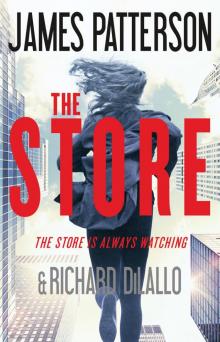 The Store
The Store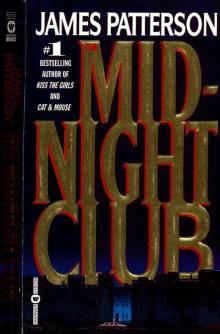 The Midnight Club
The Midnight Club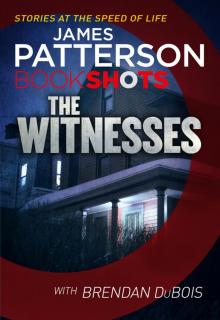 The Witnesses
The Witnesses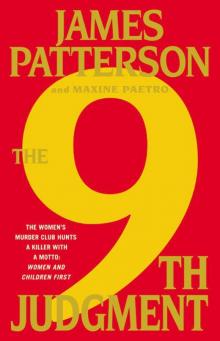 The 9th Judgment
The 9th Judgment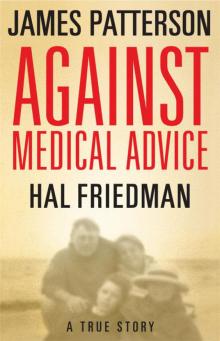 Against Medical Advice
Against Medical Advice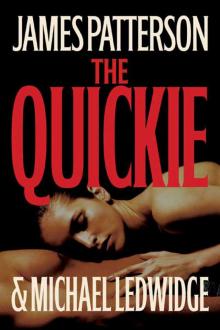 The Quickie
The Quickie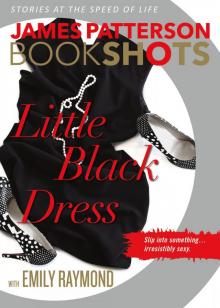 Little Black Dress
Little Black Dress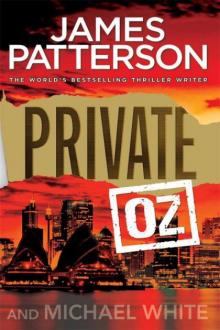 Private Oz
Private Oz Homeroom Diaries
Homeroom Diaries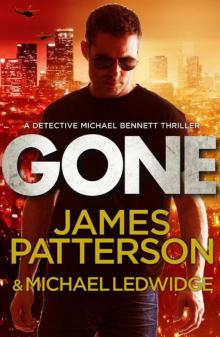 Gone
Gone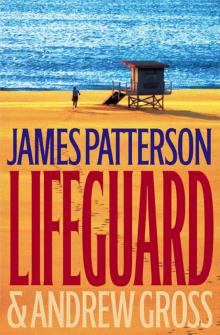 Lifeguard
Lifeguard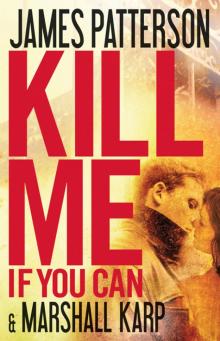 Kill Me if You Can
Kill Me if You Can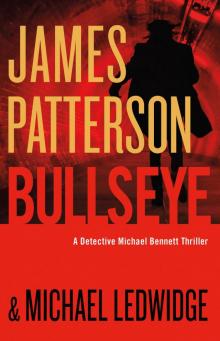 Bullseye
Bullseye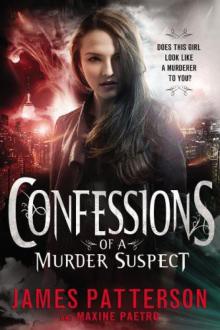 Confessions of a Murder Suspect
Confessions of a Murder Suspect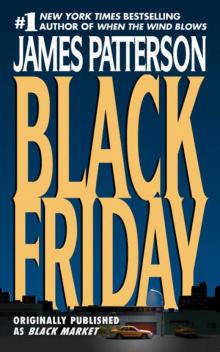 Black Friday
Black Friday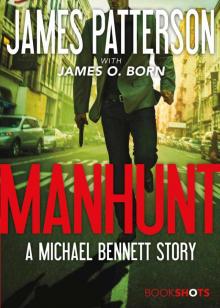 Manhunt
Manhunt Filthy Rich
Filthy Rich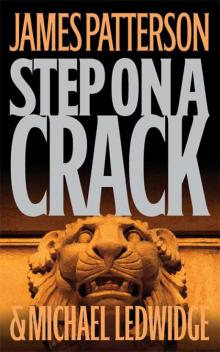 Step on a Crack
Step on a Crack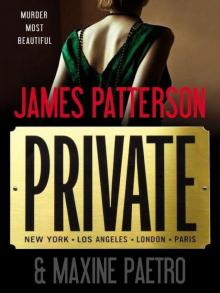 Private
Private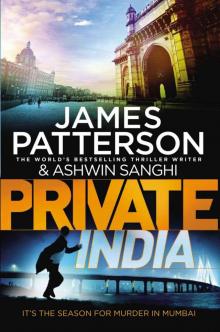 Private India
Private India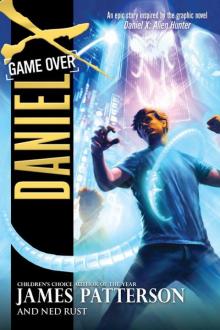 Game Over
Game Over Private Sydney
Private Sydney The Murder House
The Murder House Mistress
Mistress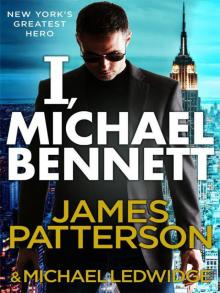 I, Michael Bennett
I, Michael Bennett The Gift
The Gift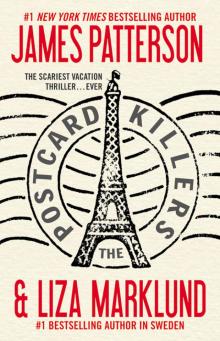 The Postcard Killers
The Postcard Killers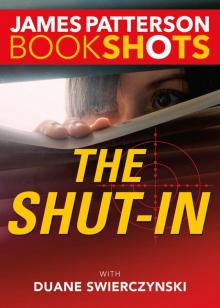 The Shut-In
The Shut-In The House Husband
The House Husband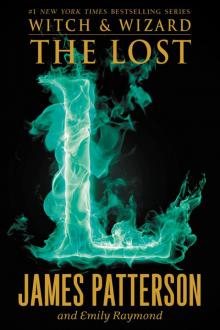 The Lost
The Lost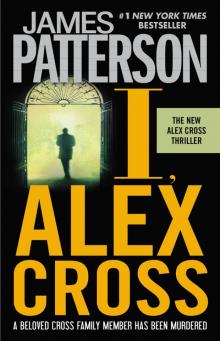 I, Alex Cross
I, Alex Cross Going Bush
Going Bush 16th Seduction
16th Seduction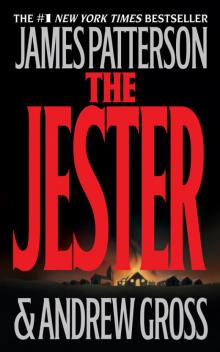 The Jester
The Jester Along Came a Spider
Along Came a Spider The Lake House
The Lake House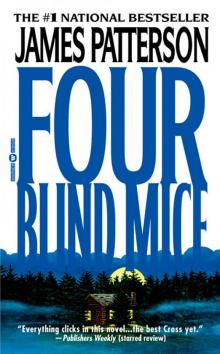 Four Blind Mice
Four Blind Mice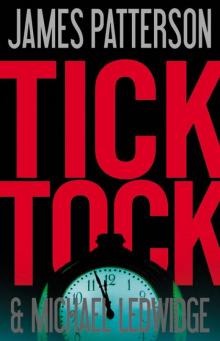 Tick Tock
Tick Tock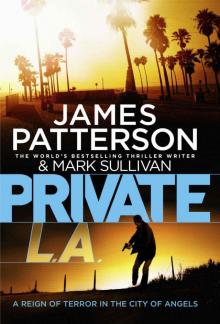 Private L.A.
Private L.A.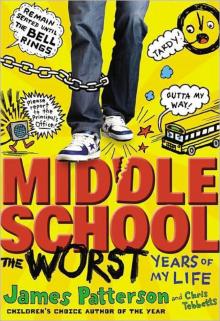 Middle School, the Worst Years of My Life
Middle School, the Worst Years of My Life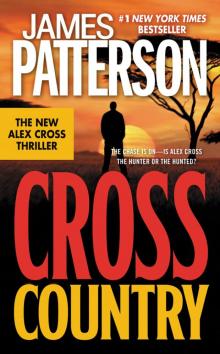 Cross Country
Cross Country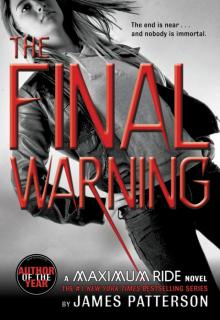 The Final Warning
The Final Warning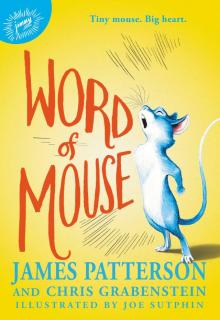 Word of Mouse
Word of Mouse Come and Get Us
Come and Get Us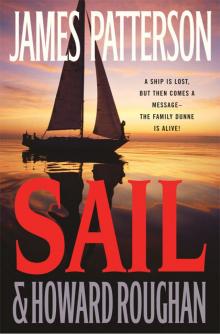 Sail
Sail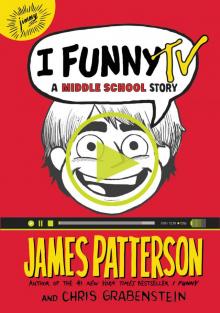 I Funny TV: A Middle School Story
I Funny TV: A Middle School Story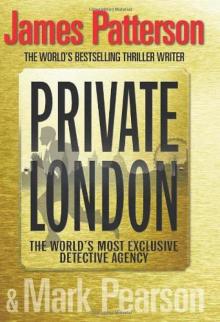 Private London
Private London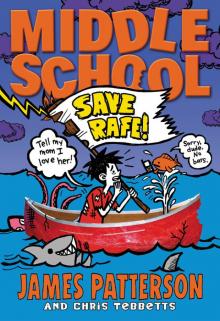 Save Rafe!
Save Rafe!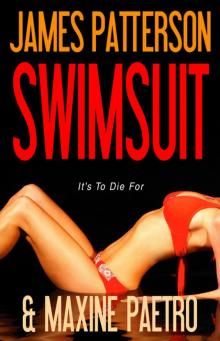 Swimsuit
Swimsuit Sam's Letters to Jennifer
Sam's Letters to Jennifer 3rd Degree
3rd Degree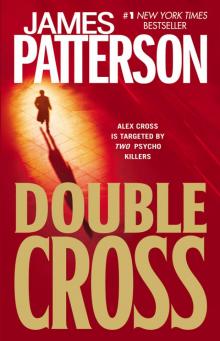 Double Cross
Double Cross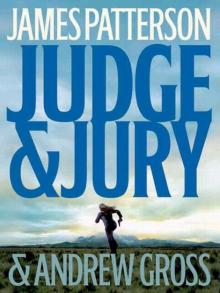 Judge & Jury
Judge & Jury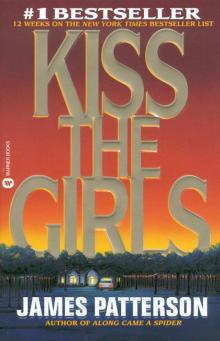 Kiss the Girls
Kiss the Girls Second Honeymoon
Second Honeymoon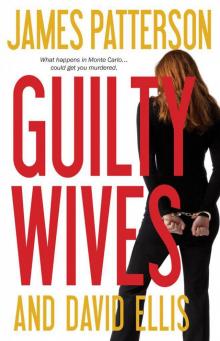 Guilty Wives
Guilty Wives 1st to Die
1st to Die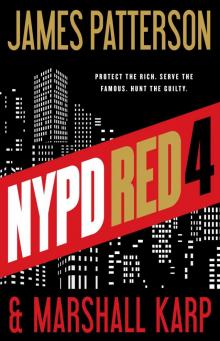 NYPD Red 4
NYPD Red 4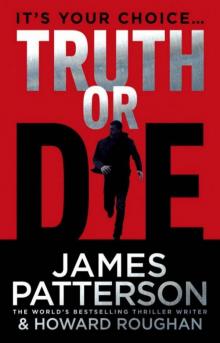 Truth or Die
Truth or Die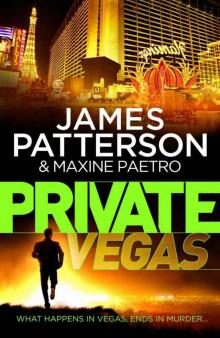 Private Vegas
Private Vegas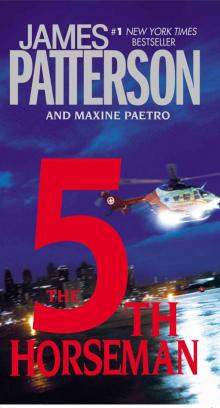 The 5th Horseman
The 5th Horseman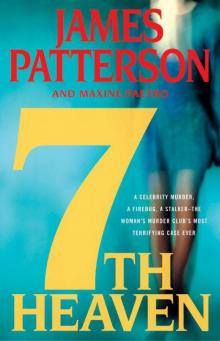 7th Heaven
7th Heaven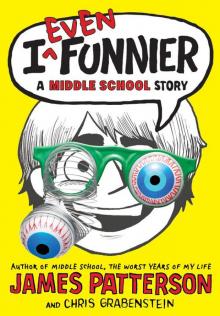 I Even Funnier
I Even Funnier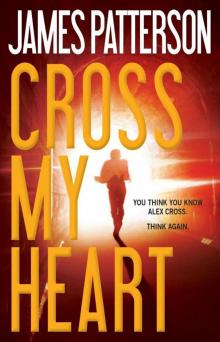 Cross My Heart
Cross My Heart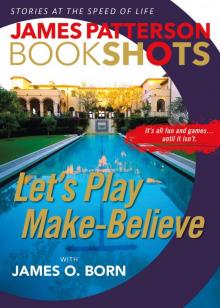 Let’s Play Make-Believe
Let’s Play Make-Believe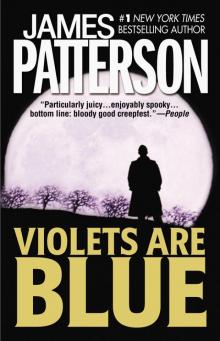 Violets Are Blue
Violets Are Blue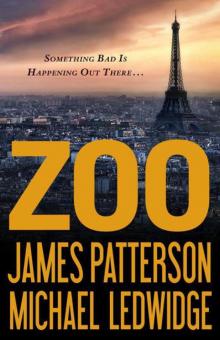 Zoo
Zoo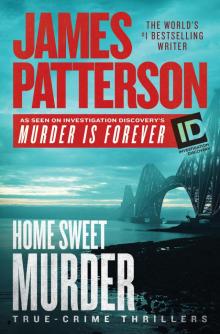 Home Sweet Murder
Home Sweet Murder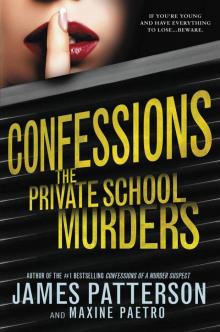 The Private School Murders
The Private School Murders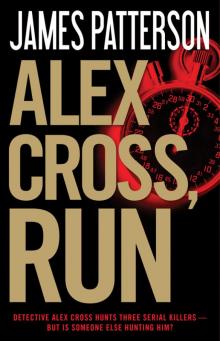 Alex Cross, Run
Alex Cross, Run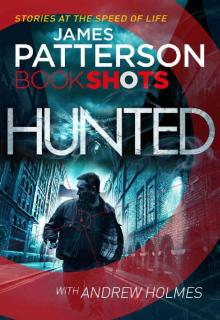 Hunted: BookShots
Hunted: BookShots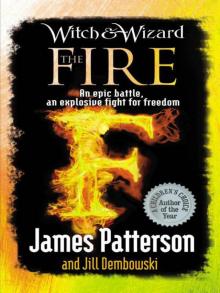 The Fire
The Fire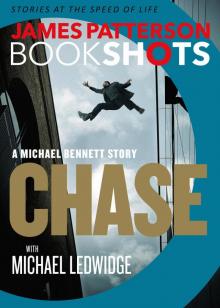 Chase
Chase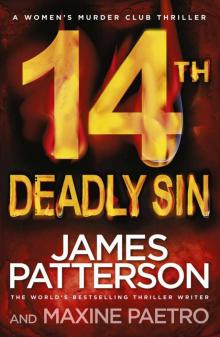 14th Deadly Sin
14th Deadly Sin Bloody Valentine
Bloody Valentine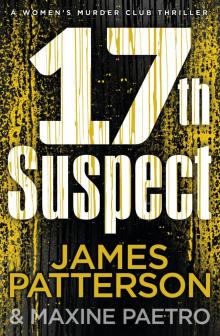 The 17th Suspect
The 17th Suspect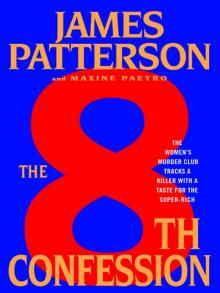 The 8th Confession
The 8th Confession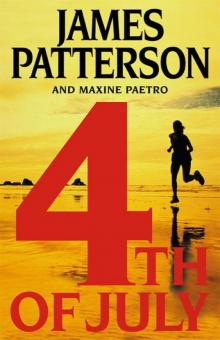 4th of July
4th of July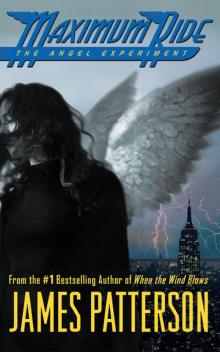 The Angel Experiment
The Angel Experiment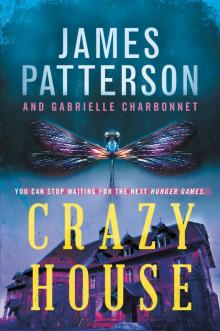 Crazy House
Crazy House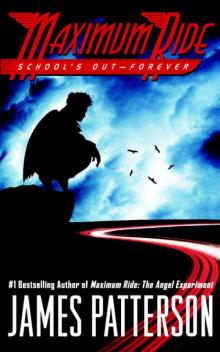 School's Out - Forever
School's Out - Forever Suzanne's Diary for Nicholas
Suzanne's Diary for Nicholas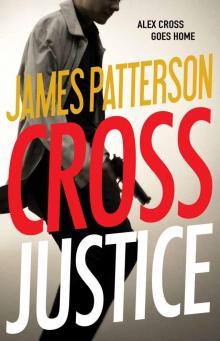 Cross Justice
Cross Justice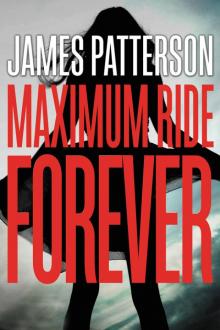 Maximum Ride Forever
Maximum Ride Forever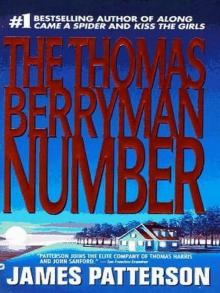 The Thomas Berryman Number
The Thomas Berryman Number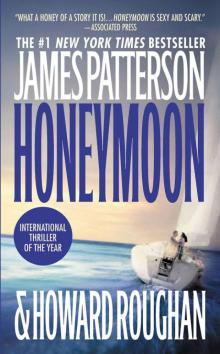 Honeymoon
Honeymoon The Medical Examiner
The Medical Examiner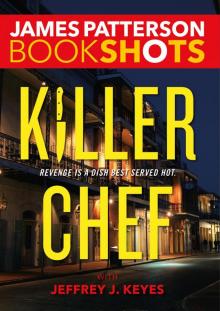 Killer Chef
Killer Chef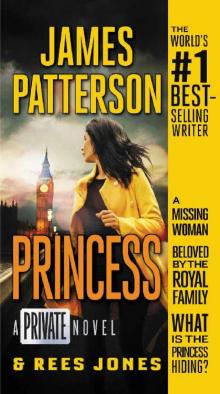 Private Princess
Private Princess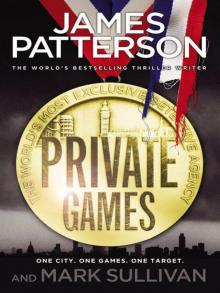 Private Games
Private Games Burn
Burn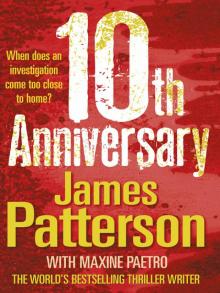 10th Anniversary
10th Anniversary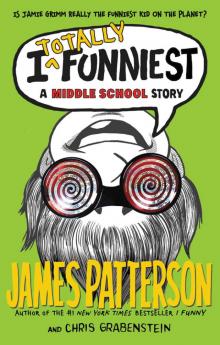 I Totally Funniest: A Middle School Story
I Totally Funniest: A Middle School Story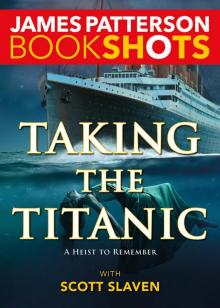 Taking the Titanic
Taking the Titanic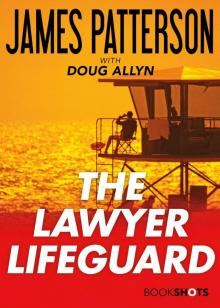 The Lawyer Lifeguard
The Lawyer Lifeguard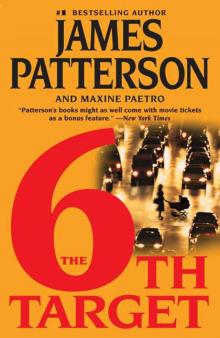 The 6th Target
The 6th Target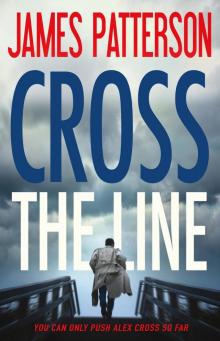 Cross the Line
Cross the Line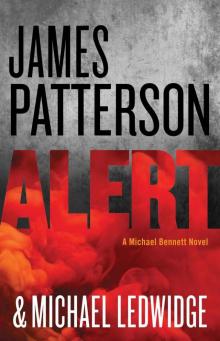 Alert
Alert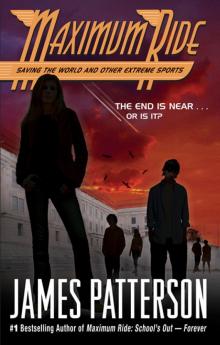 Saving the World and Other Extreme Sports
Saving the World and Other Extreme Sports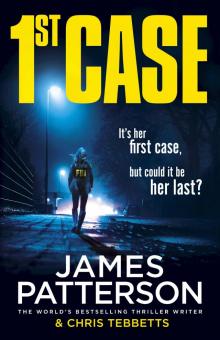 1st Case
1st Case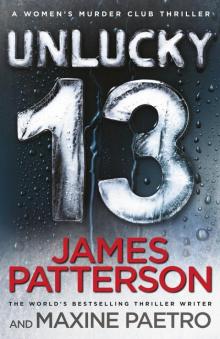 Unlucky 13
Unlucky 13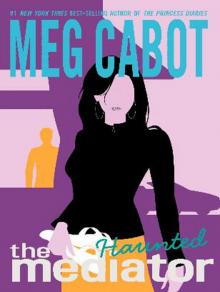 Haunted
Haunted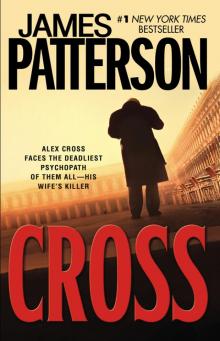 Cross
Cross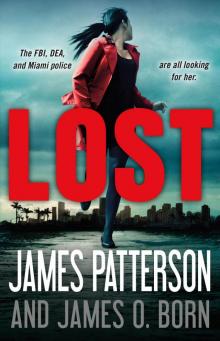 Lost
Lost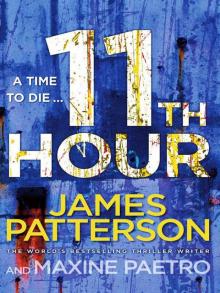 11th Hour
11th Hour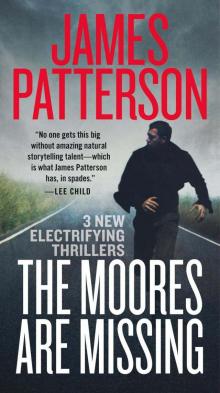 Bookshots Thriller Omnibus
Bookshots Thriller Omnibus Target: Alex Cross
Target: Alex Cross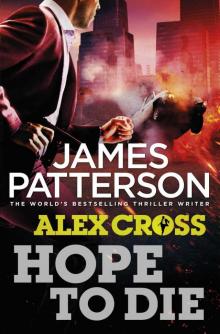 Hope to Die
Hope to Die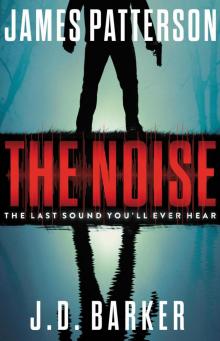 The Noise
The Noise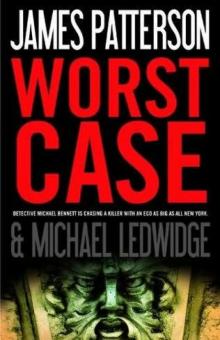 Worst Case
Worst Case Dog's Best Friend
Dog's Best Friend Nevermore: The Final Maximum Ride Adventure
Nevermore: The Final Maximum Ride Adventure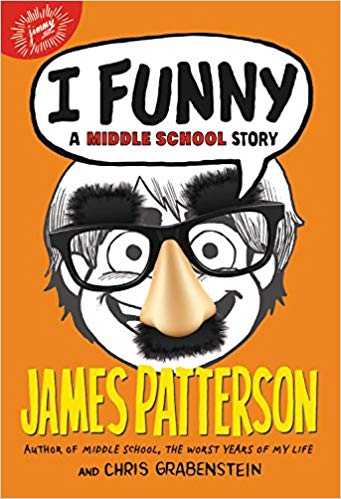 I Funny: A Middle School Story
I Funny: A Middle School Story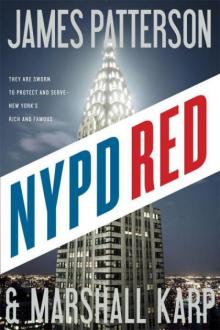 NYPD Red
NYPD Red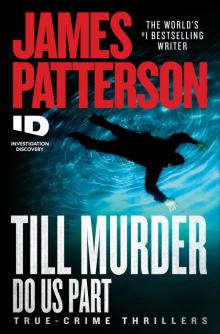 Till Murder Do Us Part
Till Murder Do Us Part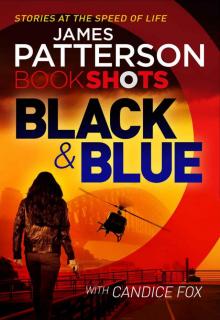 Black & Blue
Black & Blue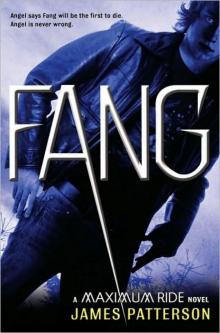 Fang
Fang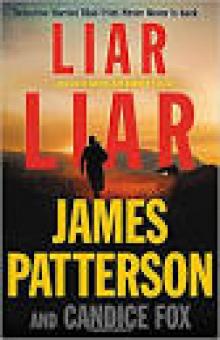 Liar Liar
Liar Liar The Inn
The Inn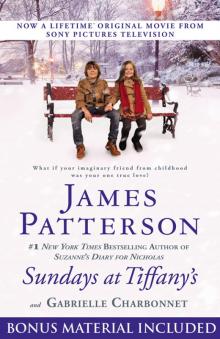 Sundays at Tiffany's
Sundays at Tiffany's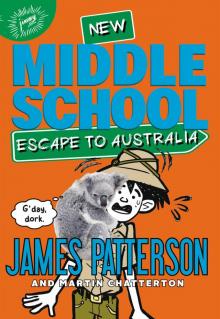 Middle School: Escape to Australia
Middle School: Escape to Australia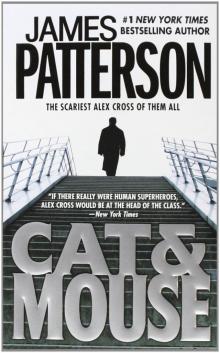 Cat and Mouse
Cat and Mouse Instinct
Instinct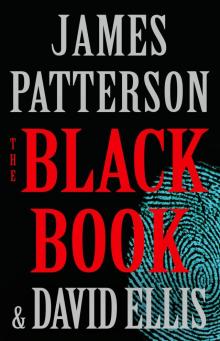 The Black Book
The Black Book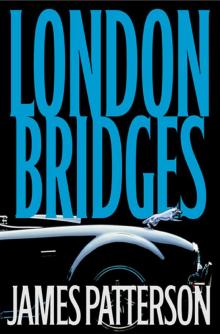 London Bridges
London Bridges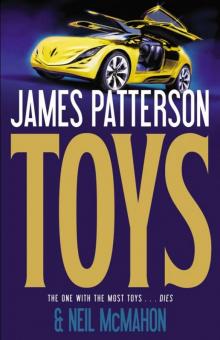 Toys
Toys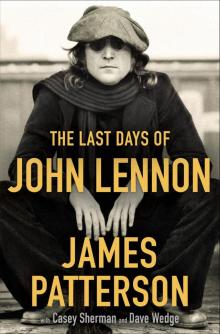 The Last Days of John Lennon
The Last Days of John Lennon Roses Are Red
Roses Are Red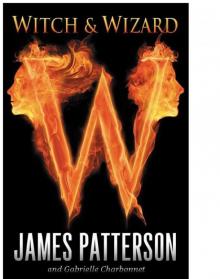 Witch & Wizard
Witch & Wizard The Dolls
The Dolls The Christmas Wedding
The Christmas Wedding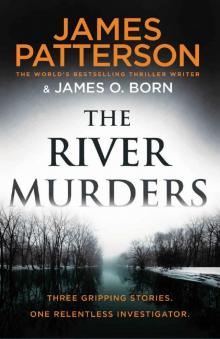 The River Murders
The River Murders The 18th Abduction
The 18th Abduction The 19th Christmas
The 19th Christmas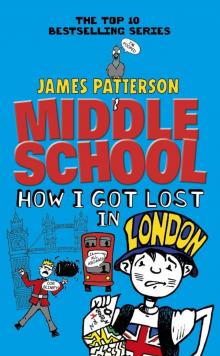 Middle School: How I Got Lost in London
Middle School: How I Got Lost in London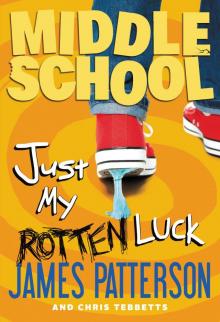 Just My Rotten Luck
Just My Rotten Luck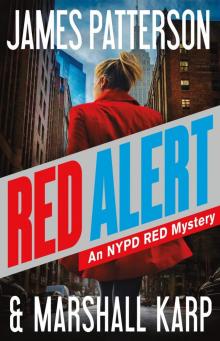 Red Alert
Red Alert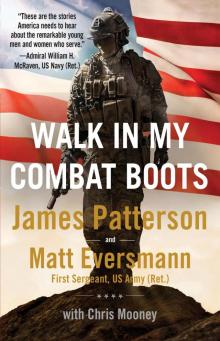 Walk in My Combat Boots
Walk in My Combat Boots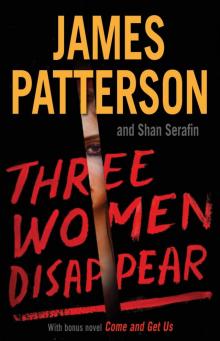 Three Women Disappear
Three Women Disappear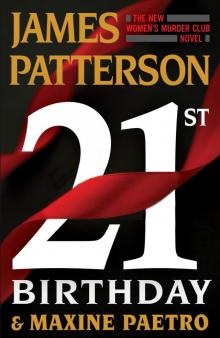 21st Birthday
21st Birthday All-American Adventure
All-American Adventure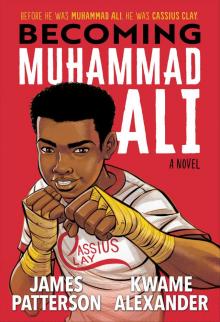 Becoming Muhammad Ali
Becoming Muhammad Ali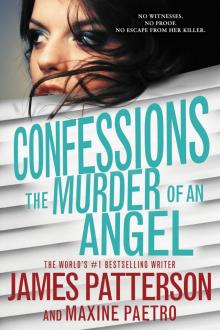 The Murder of an Angel
The Murder of an Angel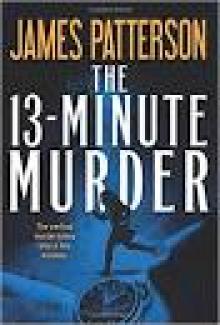 The 13-Minute Murder
The 13-Minute Murder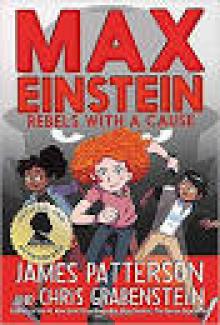 Rebels With a Cause
Rebels With a Cause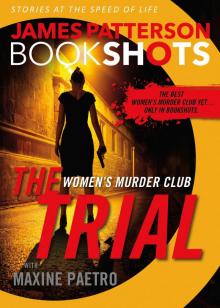 The Trial
The Trial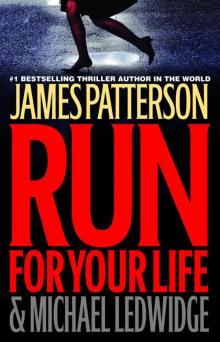 Run for Your Life
Run for Your Life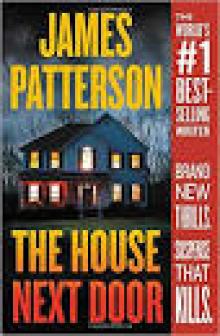 The House Next Door
The House Next Door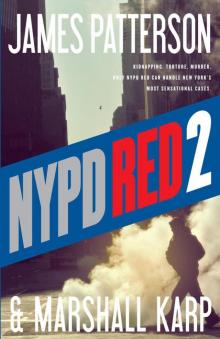 NYPD Red 2
NYPD Red 2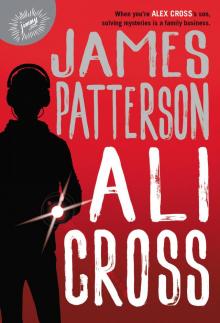 Ali Cross
Ali Cross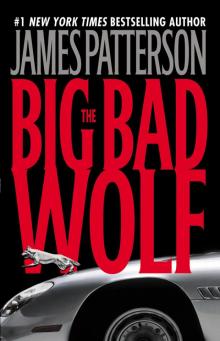 The Big Bad Wolf
The Big Bad Wolf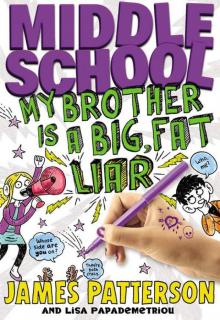 Middle School: My Brother Is a Big, Fat Liar
Middle School: My Brother Is a Big, Fat Liar Private Paris
Private Paris Miracle on the 17th Green
Miracle on the 17th Green The People vs. Alex Cross
The People vs. Alex Cross The Beach House
The Beach House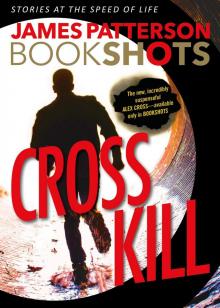 Cross Kill
Cross Kill Dog Diaries
Dog Diaries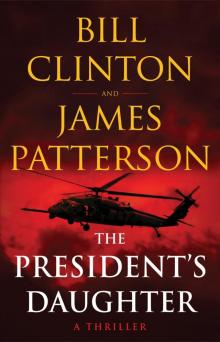 The President's Daughter
The President's Daughter Happy Howlidays
Happy Howlidays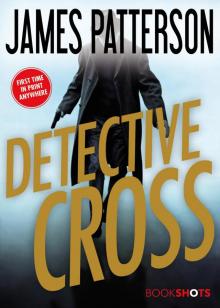 Detective Cross
Detective Cross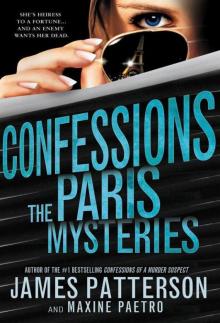 The Paris Mysteries
The Paris Mysteries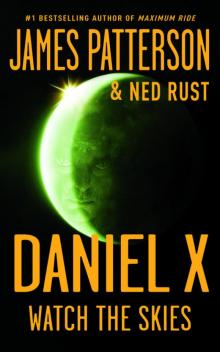 Watch the Skies
Watch the Skies 113 Minutes
113 Minutes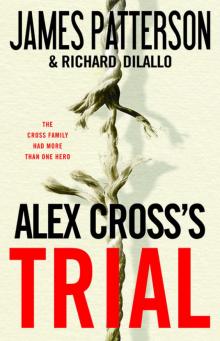 Alex Cross's Trial
Alex Cross's Trial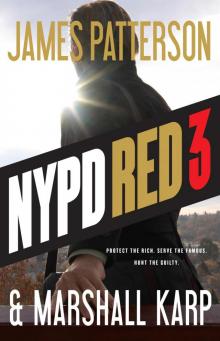 NYPD Red 3
NYPD Red 3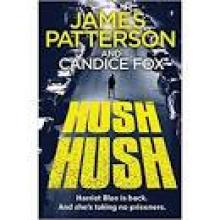 Hush Hush
Hush Hush Now You See Her
Now You See Her Merry Christmas, Alex Cross
Merry Christmas, Alex Cross 2nd Chance
2nd Chance Private Royals
Private Royals Two From the Heart
Two From the Heart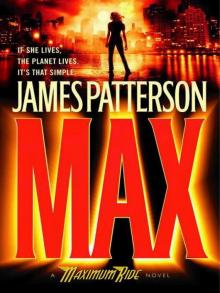 Max
Max I, Funny
I, Funny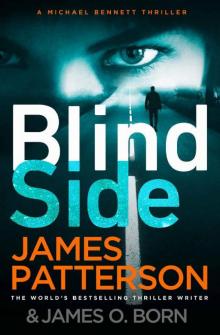 Blindside (Michael Bennett)
Blindside (Michael Bennett) Sophia, Princess Among Beasts
Sophia, Princess Among Beasts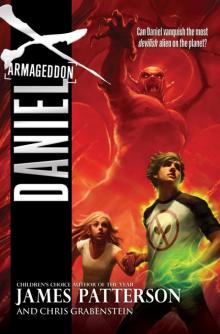 Armageddon
Armageddon Don't Blink
Don't Blink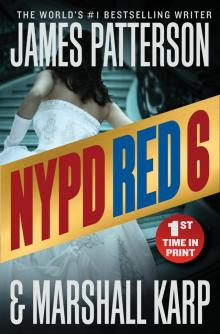 NYPD Red 6
NYPD Red 6 The First Lady
The First Lady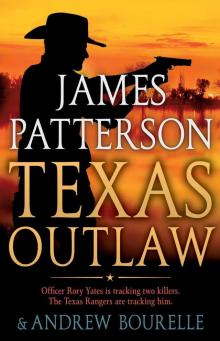 Texas Outlaw
Texas Outlaw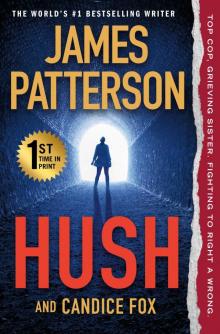 Hush
Hush Beach Road
Beach Road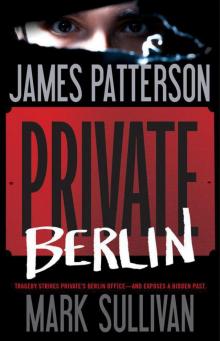 Private Berlin
Private Berlin The Family Lawyer
The Family Lawyer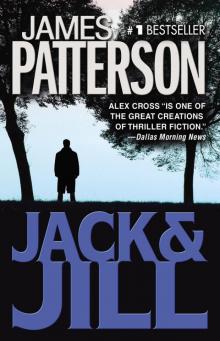 Jack & Jill
Jack & Jill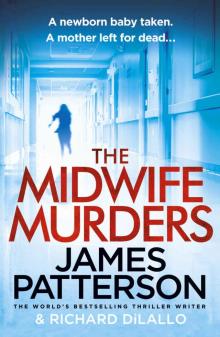 The Midwife Murders
The Midwife Murders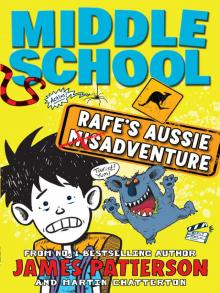 Middle School: Rafe's Aussie Adventure
Middle School: Rafe's Aussie Adventure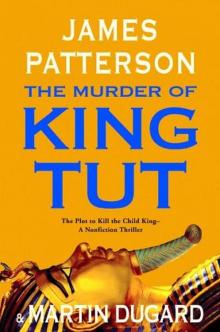 The Murder of King Tut: The Plot to Kill the Child King
The Murder of King Tut: The Plot to Kill the Child King First Love
First Love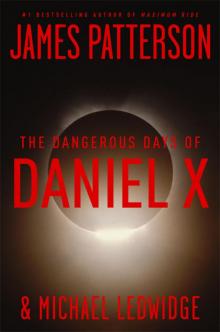 The Dangerous Days of Daniel X
The Dangerous Days of Daniel X Hawk
Hawk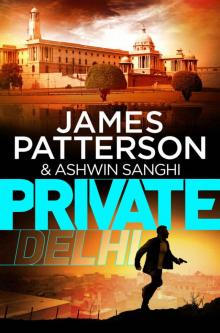 Private Delhi
Private Delhi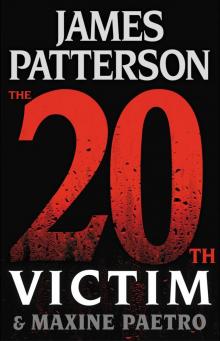 The 20th Victim
The 20th Victim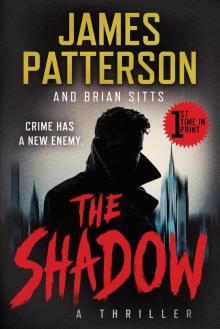 The Shadow
The Shadow Katt vs. Dogg
Katt vs. Dogg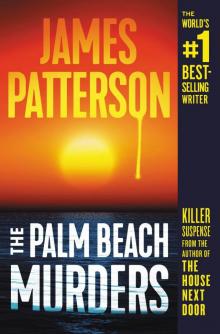 The Palm Beach Murders
The Palm Beach Murders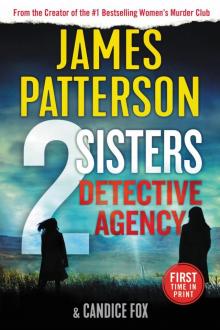 2 Sisters Detective Agency
2 Sisters Detective Agency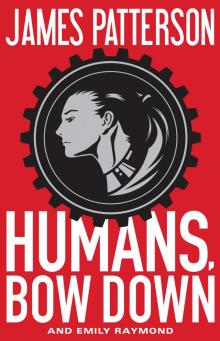 Humans, Bow Down
Humans, Bow Down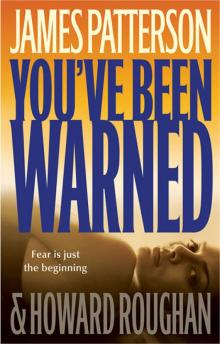 You've Been Warned
You've Been Warned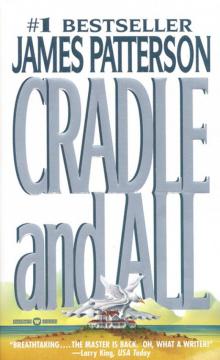 Cradle and All
Cradle and All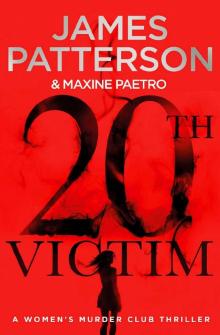 20th Victim: (Women’s Murder Club 20) (Women's Murder Club)
20th Victim: (Women’s Murder Club 20) (Women's Murder Club)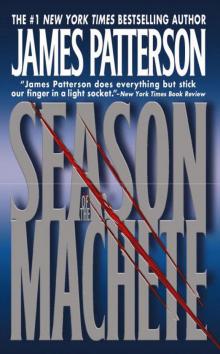 Season of the Machete
Season of the Machete Woman of God
Woman of God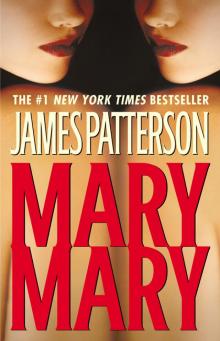 Mary, Mary
Mary, Mary Blindside
Blindside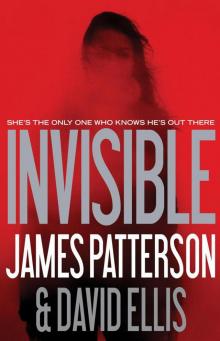 Invisible
Invisible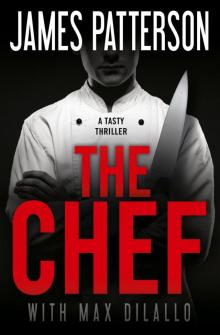 The Chef
The Chef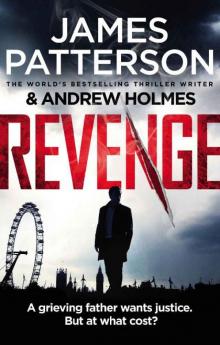 Revenge
Revenge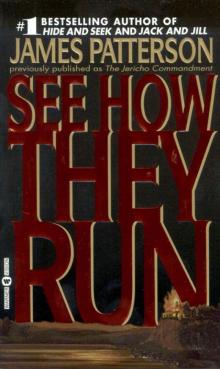 See How They Run
See How They Run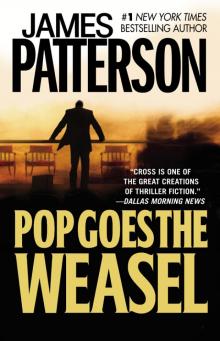 Pop Goes the Weasel
Pop Goes the Weasel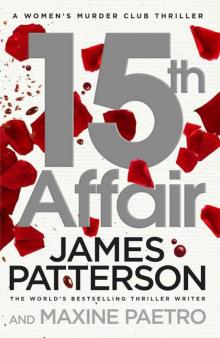 15th Affair
15th Affair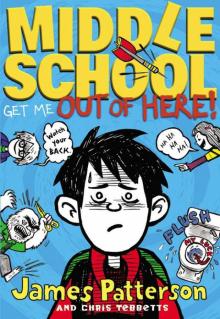 Middle School: Get Me Out of Here!
Middle School: Get Me Out of Here!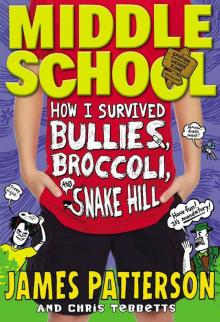 Middle School: How I Survived Bullies, Broccoli, and Snake Hill
Middle School: How I Survived Bullies, Broccoli, and Snake Hill From Hero to Zero - Chris Tebbetts
From Hero to Zero - Chris Tebbetts G'day, America
G'day, America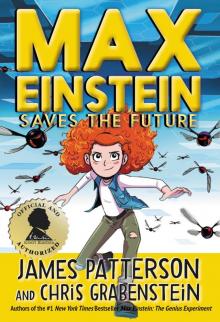 Max Einstein Saves the Future
Max Einstein Saves the Future The Cornwalls Are Gone
The Cornwalls Are Gone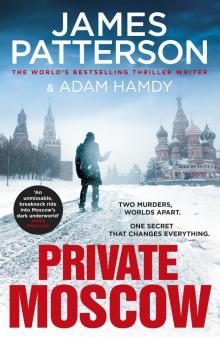 Private Moscow
Private Moscow Two Schools Out - Forever
Two Schools Out - Forever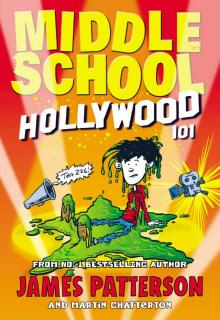 Hollywood 101
Hollywood 101 Deadly Cargo: BookShots
Deadly Cargo: BookShots 21st Birthday (Women's Murder Club)
21st Birthday (Women's Murder Club)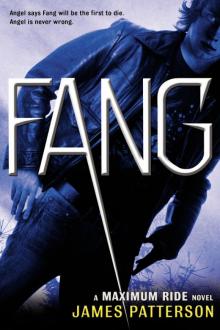 The Sky Is Falling
The Sky Is Falling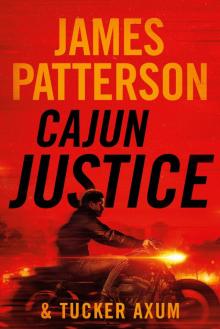 Cajun Justice
Cajun Justice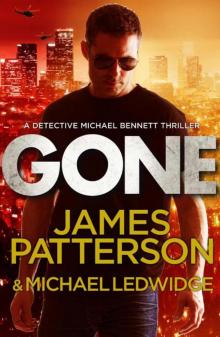 Bennett 06 - Gone
Bennett 06 - Gone The House of Kennedy
The House of Kennedy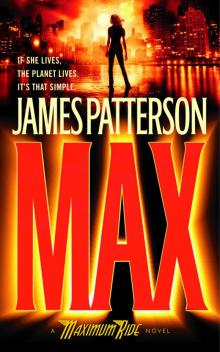 Waterwings
Waterwings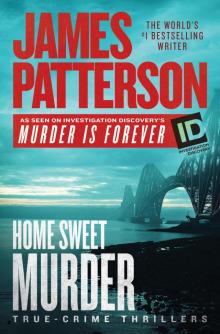 Murder is Forever, Volume 2
Murder is Forever, Volume 2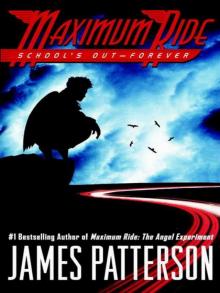 Maximum Ride 02
Maximum Ride 02 Treasure Hunters--The Plunder Down Under
Treasure Hunters--The Plunder Down Under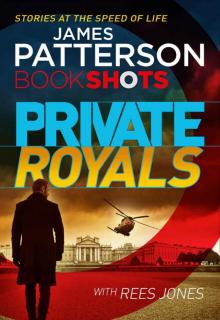 Private Royals: BookShots (A Private Thriller)
Private Royals: BookShots (A Private Thriller)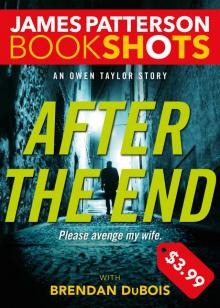 After the End
After the End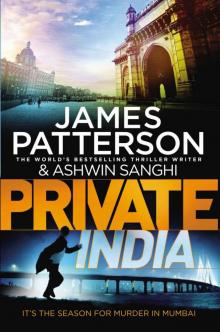 Private India: (Private 8)
Private India: (Private 8) Escape to Australia
Escape to Australia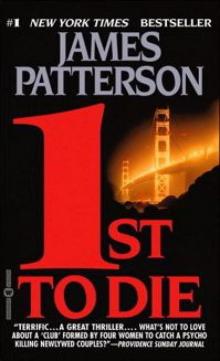 WMC - First to Die
WMC - First to Die Boys Will Be Boys
Boys Will Be Boys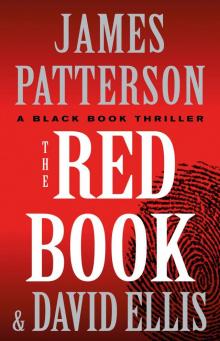 The Red Book
The Red Book 11th hour wmc-11
11th hour wmc-11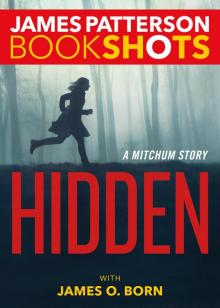 Hidden
Hidden You've Been Warned--Again
You've Been Warned--Again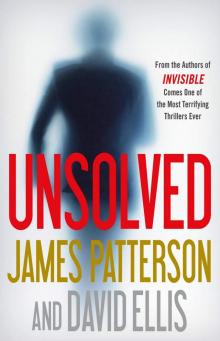 Unsolved
Unsolved Pottymouth and Stoopid
Pottymouth and Stoopid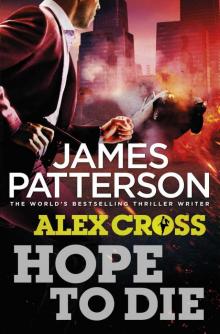 Hope to Die: (Alex Cross 22)
Hope to Die: (Alex Cross 22) The Moores Are Missing
The Moores Are Missing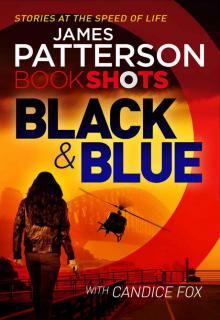 Black & Blue: BookShots (Detective Harriet Blue Series)
Black & Blue: BookShots (Detective Harriet Blue Series)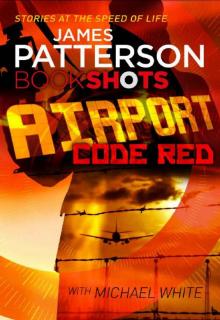 Airport - Code Red: BookShots
Airport - Code Red: BookShots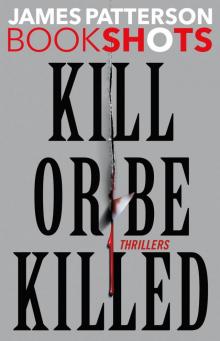 Kill or Be Killed
Kill or Be Killed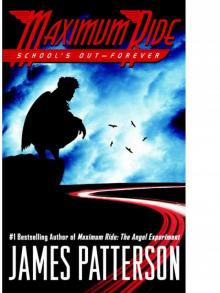 School's Out--Forever
School's Out--Forever When the Wind Blows
When the Wind Blows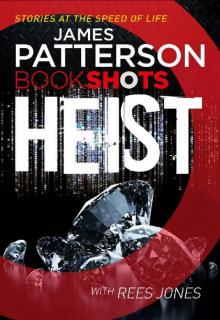 Heist: BookShots
Heist: BookShots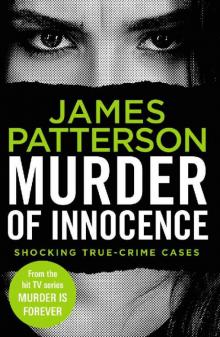 Murder of Innocence (Murder Is Forever)
Murder of Innocence (Murder Is Forever) Red Alert_An NYPD Red Mystery
Red Alert_An NYPD Red Mystery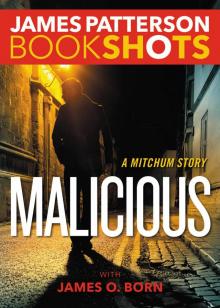 Malicious
Malicious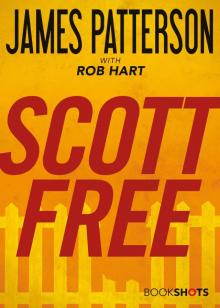 Scott Free
Scott Free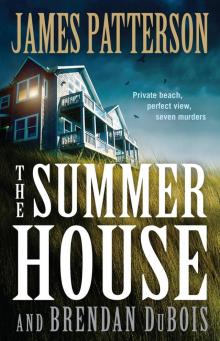 The Summer House
The Summer House French Kiss
French Kiss Treasure Hunters
Treasure Hunters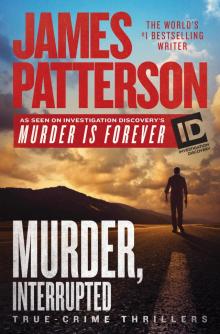 Murder Is Forever, Volume 1
Murder Is Forever, Volume 1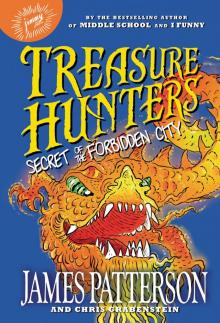 Secret of the Forbidden City
Secret of the Forbidden City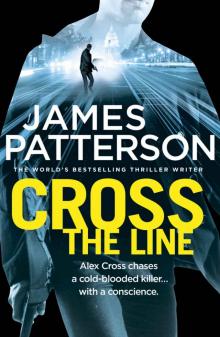 Cross the Line: (Alex Cross 24)
Cross the Line: (Alex Cross 24)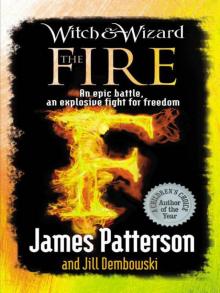 Witch & Wizard: The Fire
Witch & Wizard: The Fire![Women's Murder Club [06] The 6th Target Read online](http://i1.bookreadfree.com/i/03/24/womens_murder_club_06_the_6th_target_preview.jpg) Women's Murder Club [06] The 6th Target
Women's Murder Club [06] The 6th Target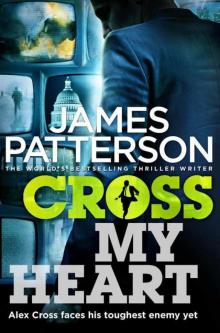 Cross My Heart ac-21
Cross My Heart ac-21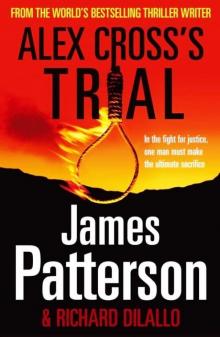 Alex Cross’s Trial ак-15
Alex Cross’s Trial ак-15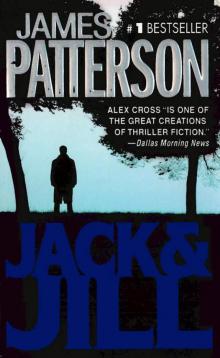 Alex Cross 03 - Jack & Jill
Alex Cross 03 - Jack & Jill Liar Liar: (Harriet Blue 3) (Detective Harriet Blue Series)
Liar Liar: (Harriet Blue 3) (Detective Harriet Blue Series) Cross Country ак-14
Cross Country ак-14 Honeymoon h-1
Honeymoon h-1 Maximum Ride: The Angel Experiment
Maximum Ride: The Angel Experiment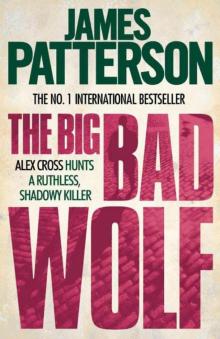 The Big Bad Wolf ак-9
The Big Bad Wolf ак-9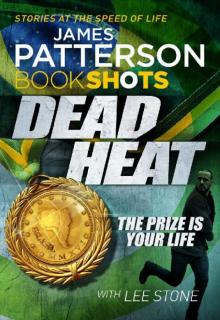 Dead Heat: BookShots (Book Shots)
Dead Heat: BookShots (Book Shots)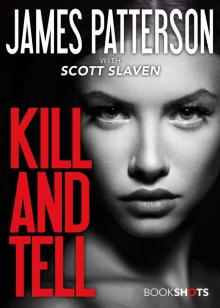 Kill and Tell
Kill and Tell Avalanche
Avalanche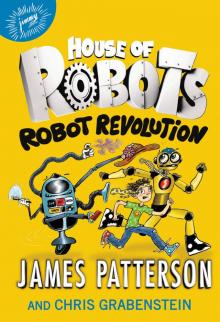 Robot Revolution
Robot Revolution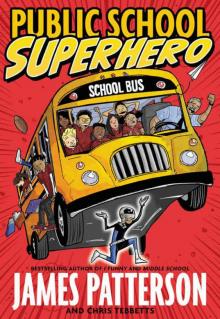 Public School Superhero
Public School Superhero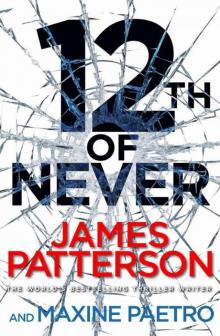 12th of Never
12th of Never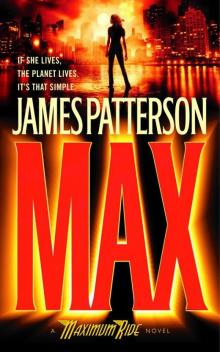 Max: A Maximum Ride Novel
Max: A Maximum Ride Novel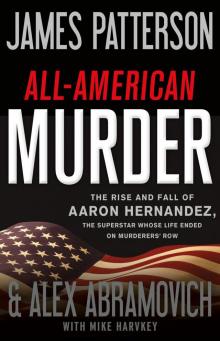 All-American Murder
All-American Murder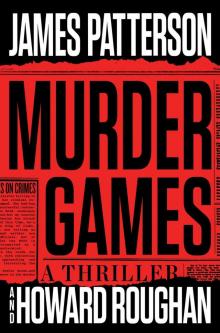 Murder Games
Murder Games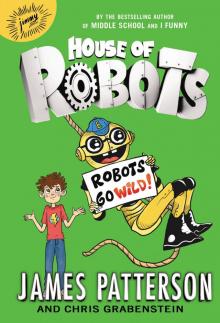 Robots Go Wild!
Robots Go Wild!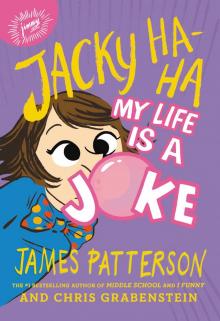 My Life Is a Joke
My Life Is a Joke Private: Gold
Private: Gold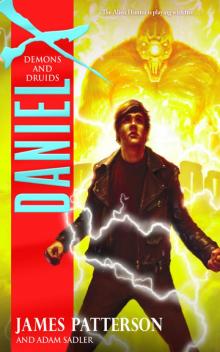 Demons and Druids
Demons and Druids Jacky Ha-Ha
Jacky Ha-Ha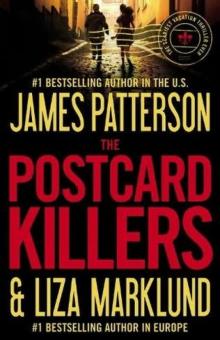 Postcard killers
Postcard killers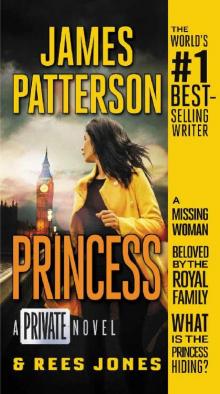 Princess: A Private Novel
Princess: A Private Novel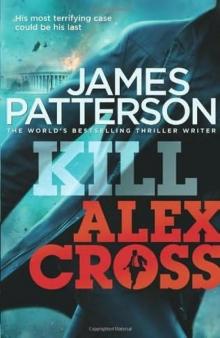 Kill Alex Cross ac-18
Kill Alex Cross ac-18 12th of Never wmc-12
12th of Never wmc-12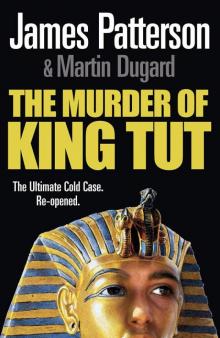 The Murder of King Tut
The Murder of King Tut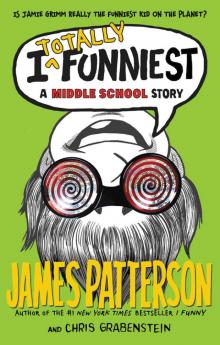 I Totally Funniest
I Totally Funniest Cross Fire ак-17
Cross Fire ак-17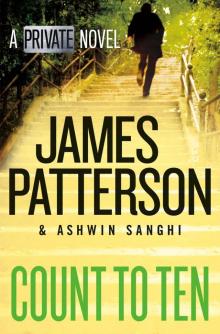 Count to Ten
Count to Ten![Women's Murder Club [10] 10th Anniversary Read online](http://i1.bookreadfree.com/i1/03/30/womens_murder_club_10_10th_anniversary_preview.jpg) Women's Murder Club [10] 10th Anniversary
Women's Murder Club [10] 10th Anniversary![Women's Murder Club [01] 1st to Die Read online](http://i1.bookreadfree.com/i1/03/31/womens_murder_club_01_1st_to_die_preview.jpg) Women's Murder Club [01] 1st to Die
Women's Murder Club [01] 1st to Die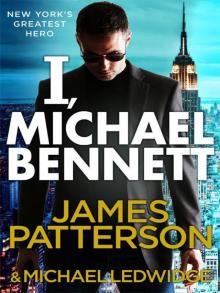 I, Michael Bennett mb-5
I, Michael Bennett mb-5 Nooners
Nooners![Women's Murder Club [08] The 8th Confession Read online](http://i1.bookreadfree.com/i1/04/03/womens_murder_club_08_the_8th_confession_preview.jpg) Women's Murder Club [08] The 8th Confession
Women's Murder Club [08] The 8th Confession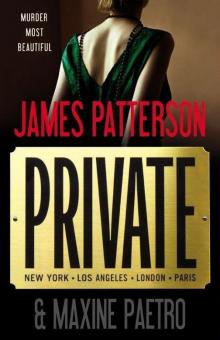 Private jm-1
Private jm-1 Treasure Hunters: Danger Down the Nile
Treasure Hunters: Danger Down the Nile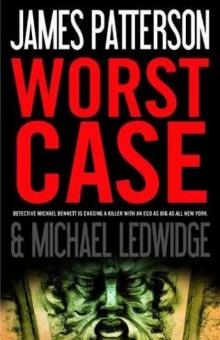 Worst Case mb-3
Worst Case mb-3 Don’t Blink
Don’t Blink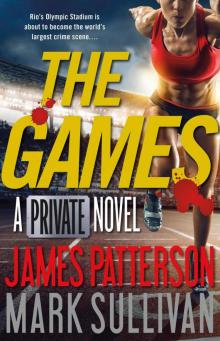 The Games
The Games The Medical Examiner: A Women's Murder Club Story
The Medical Examiner: A Women's Murder Club Story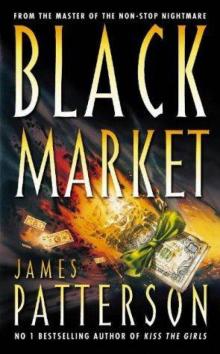 Black Market
Black Market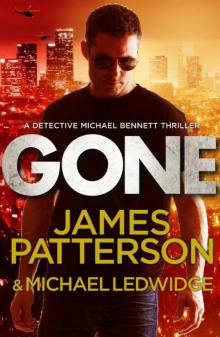 Gone mb-6
Gone mb-6![Women's Murder Club [02] 2nd Chance Read online](http://i1.bookreadfree.com/i1/04/04/womens_murder_club_02_2nd_chance_preview.jpg) Women's Murder Club [02] 2nd Chance
Women's Murder Club [02] 2nd Chance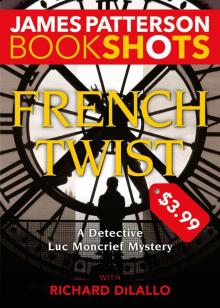 French Twist
French Twist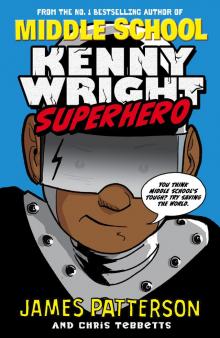 Kenny Wright
Kenny Wright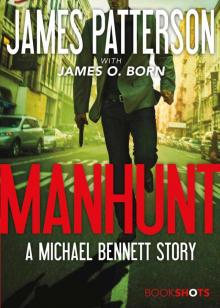 Manhunt: A Michael Bennett Story
Manhunt: A Michael Bennett Story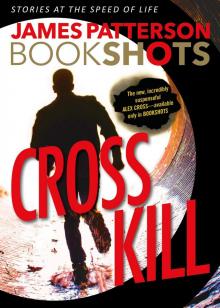 Cross Kill: An Alex Cross Story
Cross Kill: An Alex Cross Story Confessions of a Murder Suspect td-1
Confessions of a Murder Suspect td-1 Second Honeymoon h-2
Second Honeymoon h-2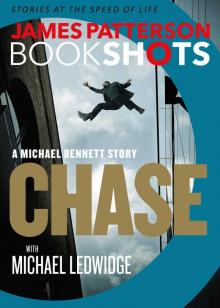 Chase_A BookShot_A Michael Bennett Story
Chase_A BookShot_A Michael Bennett Story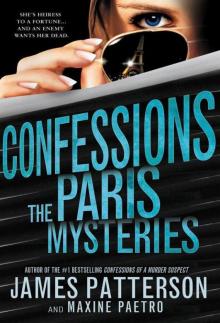 Confessions: The Paris Mysteries
Confessions: The Paris Mysteries![Women's Murder Club [09] The 9th Judgment Read online](http://i1.bookreadfree.com/i2/04/08/womens_murder_club_09_the_9th_judgment_preview.jpg) Women's Murder Club [09] The 9th Judgment
Women's Murder Club [09] The 9th Judgment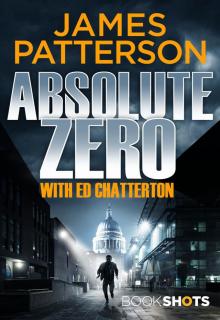 Absolute Zero
Absolute Zero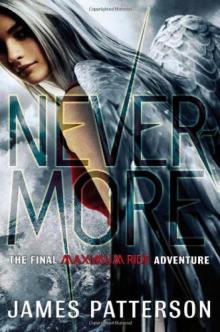 Nevermore: The Final Maximum Ride Adventure mr-8
Nevermore: The Final Maximum Ride Adventure mr-8 Angel: A Maximum Ride Novel mr-7
Angel: A Maximum Ride Novel mr-7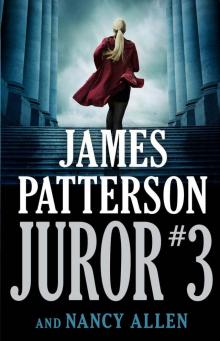 Juror #3
Juror #3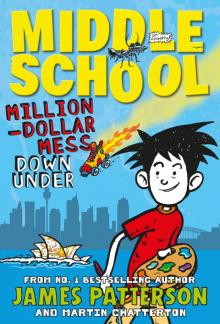 Million-Dollar Mess Down Under
Million-Dollar Mess Down Under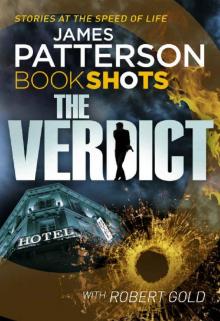 The Verdict: BookShots (A Jon Roscoe Thriller)
The Verdict: BookShots (A Jon Roscoe Thriller)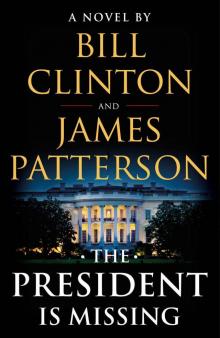 The President Is Missing: A Novel
The President Is Missing: A Novel![Women's Murder Club [04] 4th of July Read online](http://i1.bookreadfree.com/i2/04/06/womens_murder_club_04_4th_of_july_preview.jpg) Women's Murder Club [04] 4th of July
Women's Murder Club [04] 4th of July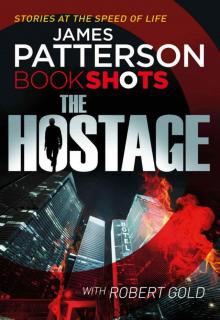 The Hostage: BookShots (Hotel Series)
The Hostage: BookShots (Hotel Series) $10,000,000 Marriage Proposal
$10,000,000 Marriage Proposal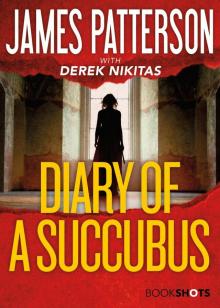 Diary of a Succubus
Diary of a Succubus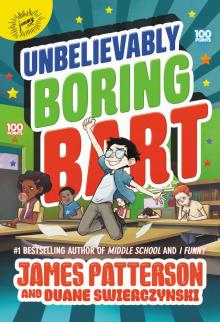 Unbelievably Boring Bart
Unbelievably Boring Bart Angel: A Maximum Ride Novel
Angel: A Maximum Ride Novel Stingrays
Stingrays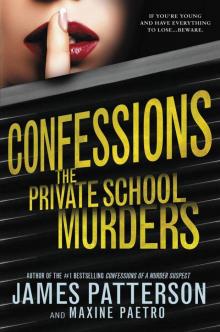 Confessions: The Private School Murders
Confessions: The Private School Murders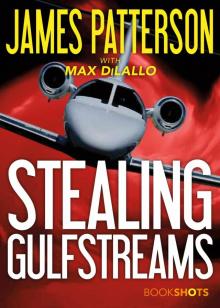 Stealing Gulfstreams
Stealing Gulfstreams![Women's Murder Club [05] The 5th Horseman Read online](http://i1.bookreadfree.com/i2/04/05/womens_murder_club_05_the_5th_horseman_preview.jpg) Women's Murder Club [05] The 5th Horseman
Women's Murder Club [05] The 5th Horseman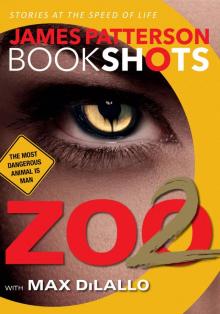 Zoo 2
Zoo 2 Jack Morgan 02 - Private London
Jack Morgan 02 - Private London Treasure Hunters--Quest for the City of Gold
Treasure Hunters--Quest for the City of Gold The Christmas Mystery
The Christmas Mystery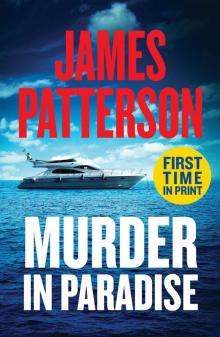 Murder in Paradise
Murder in Paradise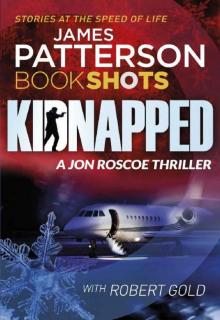 Kidnapped: BookShots (A Jon Roscoe Thriller)
Kidnapped: BookShots (A Jon Roscoe Thriller)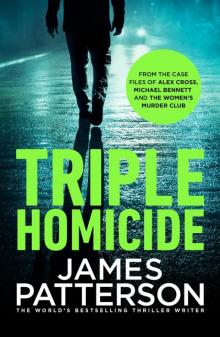 Triple Homicide_Thrillers
Triple Homicide_Thrillers 16th Seduction: (Women’s Murder Club 16) (Women's Murder Club)
16th Seduction: (Women’s Murder Club 16) (Women's Murder Club)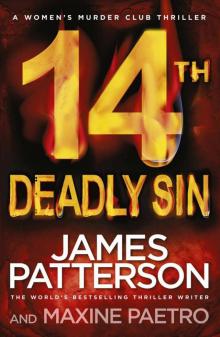 14th Deadly Sin: (Women’s Murder Club 14)
14th Deadly Sin: (Women’s Murder Club 14)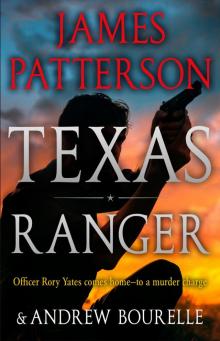 Texas Ranger
Texas Ranger Witch & Wizard 04 - The Kiss
Witch & Wizard 04 - The Kiss![Women's Murder Club [03] 3rd Degree Read online](http://i1.bookreadfree.com/i2/04/12/womens_murder_club_03_3rd_degree_preview.jpg) Women's Murder Club [03] 3rd Degree
Women's Murder Club [03] 3rd Degree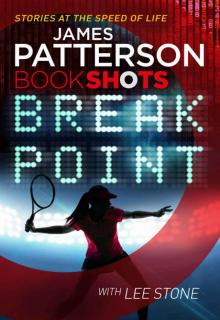 Break Point: BookShots
Break Point: BookShots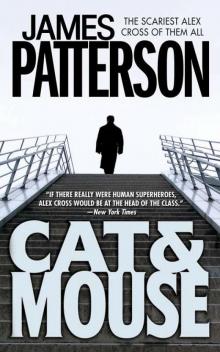 Alex Cross 04 - Cat & Mouse
Alex Cross 04 - Cat & Mouse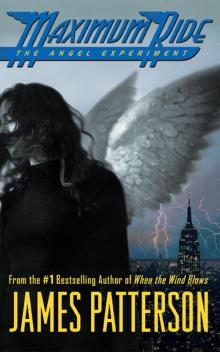 Maximum Ride
Maximum Ride Fifty Fifty: (Harriet Blue 2) (Detective Harriet Blue Series)
Fifty Fifty: (Harriet Blue 2) (Detective Harriet Blue Series) Alex Cross 02 - Kiss the Girls
Alex Cross 02 - Kiss the Girls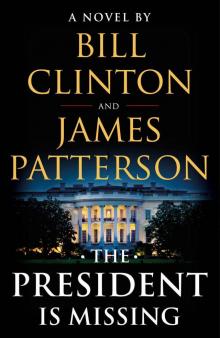 The President Is Missing
The President Is Missing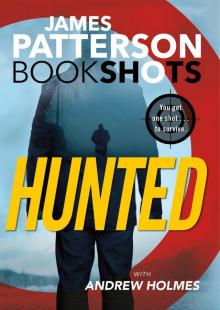 Hunted
Hunted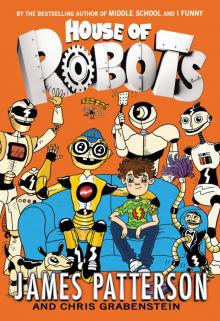 House of Robots
House of Robots Dangerous Days of Daniel X
Dangerous Days of Daniel X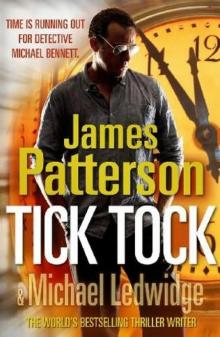 Tick Tock mb-4
Tick Tock mb-4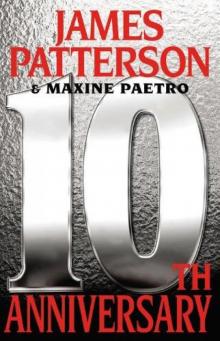 10th Anniversary wmc-10
10th Anniversary wmc-10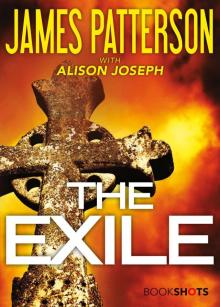 The Exile
The Exile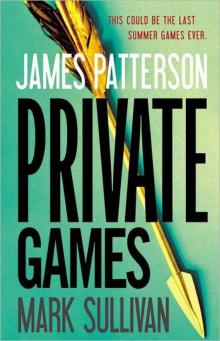 Private Games-Jack Morgan 4 jm-4
Private Games-Jack Morgan 4 jm-4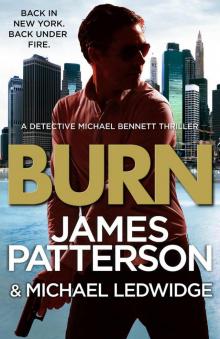 Burn: (Michael Bennett 7)
Burn: (Michael Bennett 7)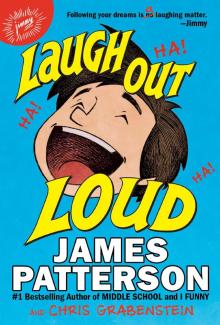 Laugh Out Loud
Laugh Out Loud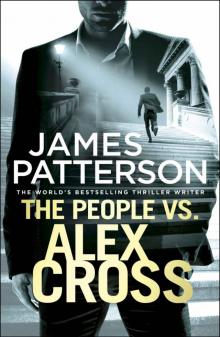 The People vs. Alex Cross: (Alex Cross 25)
The People vs. Alex Cross: (Alex Cross 25)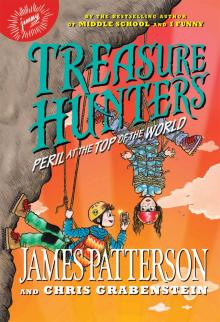 Peril at the Top of the World
Peril at the Top of the World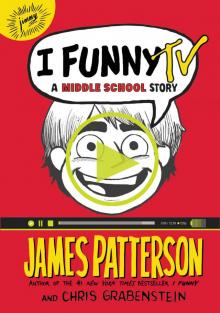 I Funny TV
I Funny TV Merry Christmas, Alex Cross ac-19
Merry Christmas, Alex Cross ac-19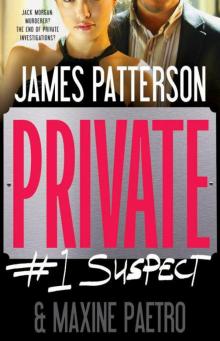 #1 Suspect jm-3
#1 Suspect jm-3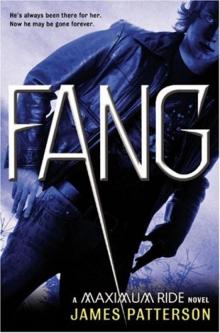 Fang: A Maximum Ride Novel
Fang: A Maximum Ride Novel![Women's Murder Club [07] 7th Heaven Read online](http://i1.bookreadfree.com/i2/04/13/womens_murder_club_07_7th_heaven_preview.jpg) Women's Murder Club [07] 7th Heaven
Women's Murder Club [07] 7th Heaven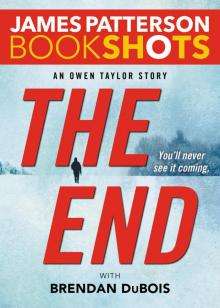 The End
The End